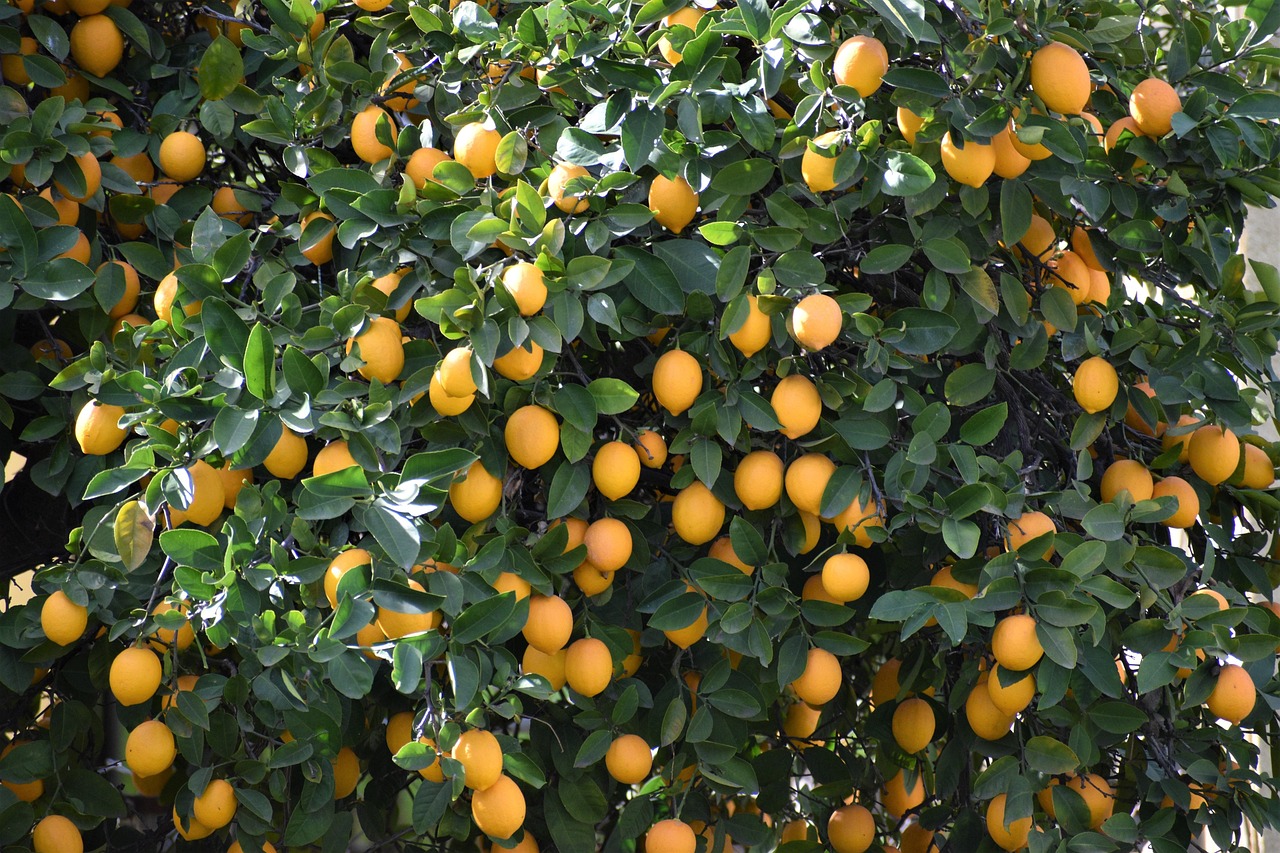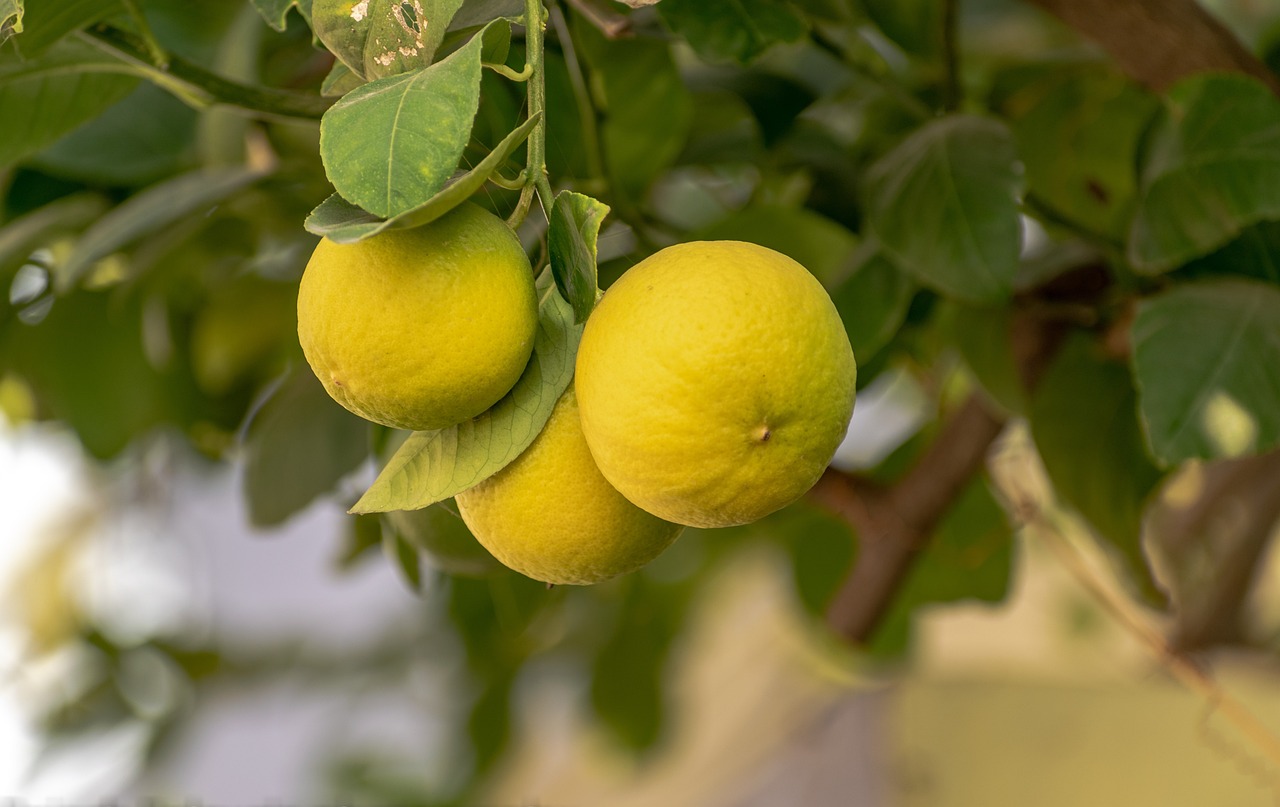Meyer lemon trees require careful pruning to promote healthy growth, enhance fruit production, and maintain their shape. Regular seasonal care includes removing dead or damaged branches, thinning out crowded areas, and shaping the tree to allow sunlight to penetrate the canopy.
Meyer lemons are a popular choice among gardeners due to their sweet, fragrant fruit and attractive foliage. Pruning is an essential practice for maintaining the health and productivity of these trees. It not only helps in shaping the tree but also encourages new growth and improves air circulation. By understanding the right techniques and timing for pruning, you can ensure your Meyer lemon tree thrives throughout the seasons.

Before diving into the specifics of pruning techniques, it is helpful to understand the unique characteristics of Meyer lemon trees. They are smaller than standard lemon trees, making them ideal for home gardens or container planting. The fruit is rounder and less acidic, producing a sweeter flavor that many find appealing. Their glossy green leaves add aesthetic value to any garden.
Understanding Meyer Lemon Tree Growth
Meyer lemon trees typically grow to about 6 to 10 feet tall, depending on their growing conditions. They thrive in well-drained soil and require full sun exposure for optimal growth. Here are some essential growth characteristics:
- Growth Habit: Meyer lemon trees have a bushy growth habit with dense foliage.
- Leaf Structure: The leaves are oval-shaped, dark green, and glossy.
- Flowering: They can produce fragrant flowers multiple times a year, leading to continuous fruiting.
Understanding these characteristics is vital when planning your pruning schedule. Seasonal changes can greatly affect how you approach pruning tasks. The best time to prune Meyer lemon trees is in late winter or early spring before new growth begins. This timing helps minimize stress on the tree and promotes robust growth during the growing season.

Tools Needed for Pruning
Having the right tools is crucial for effective pruning. Here are some essential tools you should consider:
- Pruning Shears: Ideal for small branches and precise cuts.
- Loppers: Useful for cutting thicker branches that are difficult to reach.
- Saw: Necessary for larger branches that require more force to cut.
- Gloves: Protect your hands from thorns and sharp edges.
- Hand Sanitizer: Use this to disinfect your tools before and after use to prevent disease spread.
Ensuring your tools are sharp and clean will make the process smoother and less stressful for both you and the tree.
Pruning Techniques for Meyer Lemon Trees
When you are ready to start pruning, there are several techniques to keep in mind that will help you achieve the best results.

1. Remove Dead or Damaged Wood
The first step in pruning is to remove any dead, damaged, or diseased branches. These can hinder the tree’s growth and make it more susceptible to pests and diseases. Look for branches that are brown, brittle, or show signs of decay.
2. Thin Out Crowded Areas
Meyer lemon trees can become dense over time. Thinning out crowded areas allows more light and air to reach the inner parts of the tree. This practice encourages healthy growth and fruit development. Aim to maintain an open center, which helps prevent fungal diseases.
3. Shape the Tree
Shaping your Meyer lemon tree will help it maintain a desirable size and form. Focus on creating a balanced shape by trimming back excessive growth on one side. Prune according to the natural shape of the tree, ensuring it looks aesthetically pleasing while still being functional.

Timing Your Pruning
The timing of your pruning is crucial for promoting healthy growth. The best time to prune Meyer lemon trees is during their dormant period, typically in late winter or early spring. Pruning at this time minimizes stress and allows the tree to focus its energy on new growth as spring arrives.
| Season | Pruning Activity |
|---|---|
| Winter | Remove dead or damaged wood. |
| Spring | Shape the tree; thin out crowded areas. |
| Summer | Light pruning of overly vigorous growth. |
| Fall | Avoid heavy pruning; focus on maintenance. |
This table outlines seasonal care activities specific to Meyer lemon trees, helping you keep track of what needs to be done throughout the year. Adhering to this schedule ensures that your tree remains healthy and productive while minimizing potential damage from improper pruning practices.
Common Mistakes in Pruning Meyer Lemon Trees
While pruning is essential for the health of your Meyer lemon tree, there are common mistakes gardeners often make. Avoiding these pitfalls will help ensure your tree remains healthy and productive.
1. Pruning at the Wrong Time
One of the most significant mistakes is pruning at the wrong time of year. Pruning during the wrong season can stress the tree and lead to reduced fruit production. Always aim to prune in late winter or early spring when the tree is dormant.
2. Over-Pruning
Another frequent error is over-pruning. Removing too many branches can weaken the tree and hinder its growth. Aim to remove no more than 20% of the tree’s total foliage in one season. This will allow for sufficient growth while maintaining the tree’s health.
3. Not Disinfecting Tools
Failing to disinfect your pruning tools can introduce diseases into the tree. Always clean your shears and loppers with a solution of water and bleach or rubbing alcohol before and after each pruning session. This simple step can prevent infections and keep your tree healthy.
4. Ignoring Tree Structure
Some gardeners prune without considering the tree’s natural structure. Avoid cutting branches that disrupt the overall shape of the tree. Focus on enhancing natural growth patterns rather than forcing an unnatural shape.
Signs Your Meyer Lemon Tree Needs Pruning
Recognizing when your Meyer lemon tree needs pruning is crucial for its health. Here are some signs to look for:
- Excessive Growth: If you notice a lot of new growth, it may be time to thin out crowded areas.
- Dead or Diseased Branches: These should be removed immediately to prevent the spread of diseases.
- Pests: If you see an increase in pests, it may indicate that overcrowded branches are creating a suitable environment for infestations.
- Reduced Fruit Production: A lack of fruit or smaller fruit size could be a sign that the tree needs attention.
Pruning Techniques Explained
Understanding various pruning techniques can enhance your ability to care for your Meyer lemon tree effectively. Below are some detailed techniques to consider:
1. Heading Back
This technique involves cutting back a branch to a bud or lateral branch. Heading back encourages bushier growth and is useful for shaping the tree. Cut just above a bud that is facing outward, allowing new growth to develop in a desired direction.
2. Thinning Cuts
Thinning cuts remove entire branches at their base, which reduces crowding and increases light penetration within the canopy. This technique fosters healthier growth by ensuring that air and light reach all parts of the tree.
3. Pinching
Pinching involves using your fingers to remove small tips of new growth, which encourages branching while keeping the tree compact. This method is particularly effective for young trees or those grown in containers.
Steps for Effective Pinching
- Identify vigorous new shoots that are growing vertically.
- Pinch off the tip just above a leaf node.
- Avoid pinching too many shoots at once to prevent shock.
Seasonal Care Beyond Pruning
While pruning is vital, additional seasonal care helps maintain your Meyer lemon tree’s health. Here are some practices to incorporate throughout the year:
Watering Schedule
Meyer lemon trees require consistent watering to thrive. The soil should remain moist but not soggy. As a rule of thumb, water deeply once a week during dry periods. Adjust this schedule based on rainfall and temperature.
Fertilizing
Providing adequate nutrients is essential for fruit production and overall health. Use a balanced fertilizer specifically formulated for citrus trees. Apply fertilizer in early spring and again in late summer, following the manufacturer’s instructions for application rates.
| Season | Care Tasks |
|---|---|
| Spring | Prune, fertilize, check for pests. |
| Summer | Water regularly; monitor growth. |
| Fall | Prepare for winter; reduce watering. |
| Winter | Inspect for diseases; avoid excess moisture. |
The table above summarizes essential care tasks throughout each season, providing clarity on what needs to be done for optimal growth and fruit production. Following these guidelines will help you achieve a thriving Meyer lemon tree in your garden.
Dealing with Pests and Diseases
Maintaining a Meyer lemon tree involves more than just pruning and watering. Pests and diseases can significantly affect the health of your tree. Being proactive in identifying and managing these issues is crucial for successful growth and fruit production.
Common Pests
Meyer lemon trees are susceptible to a variety of pests. Recognizing the signs of infestation early can help you take effective action. Here are some common pests to watch for:
- Aphids: Tiny, soft-bodied insects that suck sap from leaves, causing yellowing and curling.
- Spider Mites: These arachnids create fine webs on the undersides of leaves and may cause stippling or discoloration.
- Scale Insects: Small, hard bumps on stems and leaves that can weaken the tree by sucking sap.
- Caterpillars: Larvae of moths that eat leaves and can cause significant damage if not controlled.
Signs of Infestation
Identifying pest problems early is essential. Look for these signs:
- Leaves appear curled or distorted.
- Sticky residue (honeydew) on leaves or nearby surfaces.
- Visible webs or small insects on the foliage.
- Leaves with holes or ragged edges.
Managing Pests
There are several methods to manage pests on your Meyer lemon tree:
- Insecticidal Soap: A safe option for controlling soft-bodied insects like aphids and spider mites. Spray directly on affected areas.
- Neem Oil: A natural pesticide that disrupts the life cycle of many pests without harming beneficial insects.
- Handpicking: For larger pests, such as caterpillars, manually removing them can be effective.
- Encourage Beneficial Insects: Ladybugs and lacewings feed on aphids and other pests. Planting diverse flowers can attract these beneficial insects.
Common Diseases Affecting Meyer Lemon Trees
Diseases can also pose a threat to your Meyer lemon tree. Understanding the symptoms and treatment options is vital for keeping your tree healthy.
1. Citrus Canker
This bacterial disease causes raised lesions on leaves, stems, and fruit. It can lead to premature leaf drop and fruit drop, significantly reducing yields. To manage citrus canker:
- Remove and destroy infected plant material.
- Disinfect pruning tools to prevent spread.
- Ensure good air circulation around the tree by pruning crowded branches.
2. Powdery Mildew
This fungal disease appears as a white powdery coating on leaves and stems, affecting photosynthesis and overall health. To combat powdery mildew:
- Increase air circulation by thinning out dense foliage.
- Avoid overhead watering to keep leaves dry.
- Apply fungicides if necessary, following label instructions closely.
3. Root Rot
This condition is often caused by overwatering and poorly drained soil. It leads to wilting leaves and root decay. To prevent and treat root rot:
- Ensure proper drainage in planting containers or garden beds.
- Avoid watering until the top inch of soil feels dry.
- If detected early, removing affected roots may help save the tree.
Proper Watering Techniques
Watering is a critical aspect of caring for Meyer lemon trees. Proper techniques can prevent water-related issues while promoting healthy growth.
Understanding Water Needs
Meyer lemon trees prefer consistent moisture but are sensitive to overwatering. The following guidelines can help you determine when to water:
- Soil Moisture Check: Insert your finger into the soil up to an inch deep. If it feels dry, it’s time to water.
- Weather Considerations: Increase watering during hot, dry spells, while reducing it during cooler months.
- Potted Trees: Container-grown trees may require more frequent watering due to faster evaporation.
Best Practices for Watering
Implementing effective watering practices can enhance the growth of your Meyer lemon tree:
- Deep Watering: Water deeply rather than frequently. This encourages roots to grow deeper into the soil.
- Use Mulch: Applying a layer of organic mulch helps retain moisture and regulate soil temperature.
- Monitor Drainage: Ensure that pots or planting areas have good drainage to prevent root rot.
Nutrient Requirements of Meyer Lemon Trees
Nutrient management is essential for promoting healthy growth and fruit production in Meyer lemon trees. Understanding their nutrient needs helps you provide the best care possible.
Nutrient Sources
Meyer lemon trees benefit from a balanced fertilizer high in nitrogen, phosphorus, and potassium. Look for fertilizers specifically formulated for citrus trees as they will have the appropriate nutrient ratios. Organic options include:
- Citrus Fertilizers: Available in granular or liquid forms designed for citrus plants.
- Compost: Incorporating compost into the soil provides essential nutrients while improving soil structure.
- Cow Manure: A well-composted manure can be an excellent organic fertilizer source but should be used sparingly to avoid nutrient overload.
Nutrient Deficiency Symptoms
Meyer lemon trees may exhibit signs of nutrient deficiencies, which can impact their health. Watch for these symptoms:
- Yellow Leaves (Nitrogen Deficiency): Older leaves may turn yellow while veins remain green.
- Purple Streaks (Phosphorus Deficiency): Leaves may show purple streaks, especially in cold weather.
- Poor Fruit Development (Potassium Deficiency): Fruits may be small or misshapen due to inadequate potassium levels.
Caring for your Meyer lemon tree involves monitoring its health closely and responding to any issues promptly. By implementing these practices, you will create an environment conducive to thriving growth and abundant fruit production.
Maintaining Your Meyer Lemon Tree Year-Round
Successfully caring for a Meyer lemon tree extends beyond pruning and seasonal care tasks. It involves a holistic approach to maintaining the tree’s environment, ensuring it receives adequate nutrients, water, and protection from pests and diseases throughout the year.
Environmental Considerations
Understanding the environmental needs of your Meyer lemon tree can enhance its growth and fruiting potential. Here are several factors to consider:
- Sunlight: Meyer lemon trees thrive in full sunlight. Ensure your tree receives at least 8 hours of direct sunlight per day. If grown indoors, place it near a south-facing window or use grow lights.
- Temperature: Ideal temperatures for Meyer lemon trees range between 70°F and 85°F during the day and should not drop below 50°F at night. Protect the tree from frost in winter by bringing potted trees indoors or covering them with frost cloth if planted outdoors.
- Soil Quality: Well-draining soil is crucial. Consider using a mix of potting soil and compost to ensure adequate drainage and nutrient supply.
Container Growing Tips
If you are growing your Meyer lemon tree in a container, additional care is required:
- Pot Size: Choose a container that is at least 12-18 inches in diameter to provide ample space for root development.
- Drainage Holes: Ensure that your pot has adequate drainage holes to prevent waterlogging.
- Repotting: Repot your tree every couple of years to refresh the soil and provide more space for growth.
Seasonal Care Checklist
To help you keep track of caring for your Meyer lemon tree, consider using this seasonal checklist:
- Spring:
- Prune dead or damaged branches.
- Fertilize with a balanced citrus fertilizer.
- Inspect for pests and diseases.
- Summer:
- Water regularly, especially during dry spells.
- Monitor for signs of pests or nutrient deficiencies.
- Provide shade during extreme heat if necessary.
- Fall:
- Reduce watering as temperatures cool.
- Harvest any remaining fruit.
- Prepare the tree for winter by checking for pests and diseases.
- Winter:
- Protect the tree from frost.
- Avoid overwatering; ensure good drainage.
- Inspect for diseases and maintain cleanliness around the base of the tree.
Final Thoughts
Caring for a Meyer lemon tree can be a rewarding experience. With proper pruning, watering, fertilizing, and pest management, you can enjoy healthy growth and bountiful fruit. Remember that each tree is unique, so take the time to observe your tree’s specific needs throughout the seasons.
By implementing a consistent care routine that includes seasonal pruning and attention to environmental factors, you will foster a thriving Meyer lemon tree. This delightful tree not only adds beauty to your garden but also provides delicious fruit that can enhance your culinary creations. With patience and dedication, your Meyer lemon tree can become a fruitful centerpiece in your landscape or a cherished addition to your indoor garden.
If you stay attentive to its needs and adjust your care practices as necessary, your Meyer lemon tree will reward you with vibrant foliage and juicy lemons for many years to come. Happy gardening!
